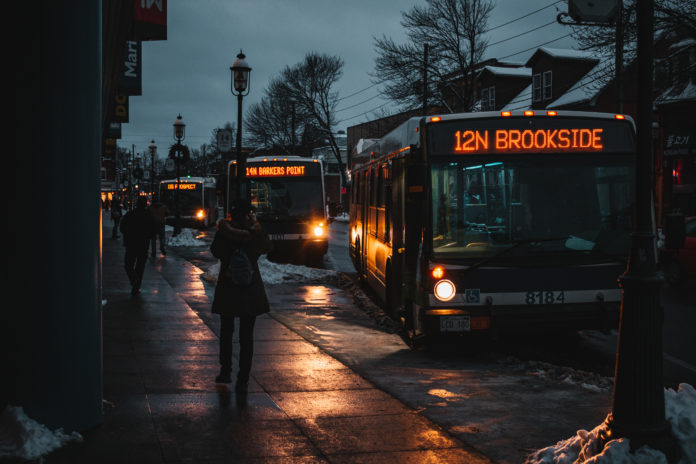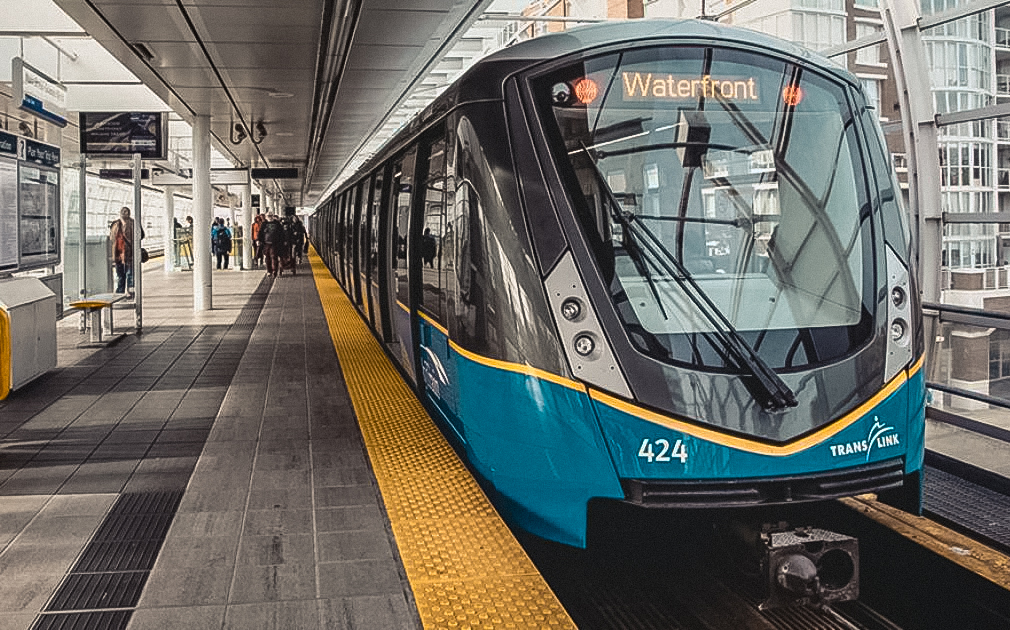

The change came so quietly, that I initially missed the announcement on the City of Fredericton’s website: “Accessible Transit will be available beginning October 1, 2020 on all busses.”
I’m just reading it now, and it’s December — my fault for not staying up-to-date on this pivotal issue. I suppose I should be having an equally quiet celebration to mark another step forward. But sometimes even a step in the right direction demands the question: “What took so long?”
A little farther down the page, the announcement reads: “As part of the new service, ramps are installed on all buses allowing passengers with mobility devices to enter a bus.”
I find the wording of that particular sentence rather interesting. Ramps “are installed,” instead of “ramps have been installed.” A minor difference; a triviality, perhaps. But by my accounts, the structural components needed to accommodate people with mobility devices (ramps, for example) have been in place on Fredericton’s buses for some time now — years, in fact. So, what took so long? Was it not simply a matter of letting the drivers know that the equipment was there, and showing them how to use it?
Furthermore, why was Fredericton Transit’s only answer to accommodating disabled riders prior to this change, to put them on a separate bus? A single, half-sized bus, outfitted with various adaptive technologies. This shortens bus travels, not to regular bus stops, but instead picks people up from their homes and takes them to their desired destinations.
This one bus serves all of Fredericton and presumably outlying areas. Patrons of Para-Transit, as it’s called, must register for the service and organize their trips well in advance. That’s not transit. It’s a shared taxi with less freedom. My mind harkens back to my days in elementary school, when I was forced to take a separate bus (a short one, interestingly) with all the other disabled students, while my friends rode to school together on the “normal” bus. This everyday act of segregation, and I don’t use that term lightly, in my youth was demeaning and heartbreaking. But it was my only way to get to school.
Before we go any further, I should probably mention: I have a physical disability, the nature of which, does not really need to be fully explored for the purposes of this story. What is important for our sake here, can be summed up in two points. Firstly, I am currently unable to operate a motor vehicle. And secondly, it sometimes takes me longer to get places on foot.
From where I stand, in my 32 years of life experience, I have observed that often, when the rest of society moves forward, the disabled community is left behind. Societal discussions regarding disabled inclusivity generally carry an apathetic, un-urgent air to them. “If it ain’t broke, don’t fix it” — even when it is “broke,” sometimes. I don’t know why this is, but if I had to guess, I would say it’s at least partly due to the fact that disabled individuals are generally not seen to possess the same level of intrinsic value as able-bodied people. It’s a harsh assessment, I know, and maybe a little overdramatic, but the pace at which disability inclusivity has progressed over the years would indicate that it’s at least partially true.
But I’m getting ahead of myself — let’s go back to 2010. I’m 22 years old. I just received a letter of acceptance in the mail from a school in Vancouver that I was hoping to get into. I’ve been a flurry of emotions ever since. What’s the West Coast like? How will I get there? Where will I live once I do? Do I know how to cook anything? Do I even know how to regularly do laundry, pay bills or keep an apartment clean?

And perhaps most importantly, how will I get to and from school and work? Commuting long distances had always been a bit of a challenge for me, living in New Brunswick. There weren’t a lot of viable transportation options here, aside from owning and operating a car. Needless to say, then, I was pretty excited to see what a big city like Vancouver had to offer.
Now it’s April 2012 — graduation. I can’t decide if I’m excited, or terrified. I’ve spent the last 16 months learning about filmmaking, and the ins and outs of an industry that I have only speculative experience in so far. I have so many questions: Where will I start? What am I even good at? How will I get my foot in the door, and how will I figure out where to go from there? But one concern that has all but left my mind by this time, is transportation.
So integrated and easy-to-use is the transit system in Vancouver, that commuting from place to place had almost become an afterthought. There is literally almost nowhere in the city that a bus can’t take you. And if you need to get out of the city, there’s not one, but three trains that can take you where you need to go — with buses that will pick you up from each station. You don’t “catch” a bus or train, per se, in Vancouver — you just go to a stop, knowing that you’re almost guaranteed to have a ride waiting for you when you arrive.
Personally, it was the closest thing I’ve ever experienced to independently driving myself around. It was, for lack of a better word, beautiful. And it wasn’t just beautiful for me: it was beautiful for many people in the city. By the time I graduated, I had met a whole gaggle of able-bodied, licensed drivers who chose not to own a vehicle, because the transit in Vancouver is just that good. In most cases, it’s just easier than driving.
It’s hard to describe in words the wonderful feeling of inclusivity that I got from that. I don’t drive because I can’t — that’s why I use transit. This used to make me feel somewhat alienated and inadequate. But riding a bus to work with hundreds of other people who are doing the same, because we live in a place where the transit is so integrated into the city’s infrastructure, that it’s just the easier option, gave me a feeling of belonging that I had never experienced before.


Now it’s 2018 in early October. The waning warmth of the summer months is slowly but surely giving way to the brisk but lovely harshness of an autumn chill. East Coast fall still hurts my skin — it’s been a while since I’ve felt it. It’s my first full year on the East Coast since moving back and I’ve just started at a new job. The distance between my apartment and office is about one and a half kilometres.
It’s a relatively walkable distance, and using my only other viable option, public transit, would add at least another hour to my commute. On this particular day, I’m running late. I don’t remember the exact reason why. But here we are. It’s gonna be a faster-than-usual trek to work, but “I need the exercise anyway.” I scramble to put myself together, eat something and fumble out the door. I’m making good time, already a couple blocks in, when out of the blue Mother Nature decides to give me a call.
“H…Hello?” I answer, tentatively.
“Hi,” she said, rather astutely, “You have to poop. Now.”
And she was right, I did. I was too far from the facilities in my office to take care of business there, so my only other option was to backtrack to my apartment. To take the time to walk back, tediously unlock my freshly locked front door, remove the several layers of outdoor clothing that I had on and do what needed to be done. Not surprisingly, this somewhat stressful brush with nature’s wrath made me even more late. Still, it was nice out — a beautiful, breezeless sunny day. Perfect for walking, really. But I couldn’t help but think to myself, “Man, today, I wish I had a ride.”
It’s times like these, that I miss Vancouver. Not for its mountains, its great sushi, or its beautiful coffee shops (I will forever and always miss those), but for its transit.
Now, Fredericton’s transit system needs no critical analysis from me — its inadequacies, put frankly, speak for themselves. Besides, I chose to move back here, and I don’t fault a city whose population is about forty times smaller than that of Vancouver, for having a lesser transit system. But it seems since I left and came back, and even before that, as though there have been changes — doable changes — in place for some time that are only now being put into motion.
When I moved back to Fredericton, I knew that public transportation here (as a system, as a concept) would be considerably less developed than it was in the ‘big city.’ The transit there opened my world to so many new experiences and I knew moving back to my hometown meant that I would be losing out on at least some of them.
But the losses ran much deeper than that. I wasn’t just missing out on good transit. It was, more or less, a whole lifestyle change affecting everything from employment to my dating life. Even as I write these words, I know I am understating it. What changed was the very way I moved through my community.


That’s what’s at stake with these kinds of decisions. Inclusion isn’t just about fairness. It is also — and perhaps more so — about identity. When I ask “what took so long” for a public transit system to integrate more accessibility into its services, what I really mean is: what took so long for them to acknowledge people in the disabled community as relevant, active members of society?
By all means, we should celebrate this “new service.” It deserves to be recognized, at least as vehemently as it was announced. But let’s not forget the baggage the buses left behind.
